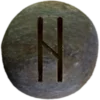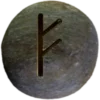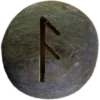Last Updated on June 22, 2025
Table of Contents


The Definitive Guide to Norse Mythology
The Prose Edda, sometimes called the Younger Edda or Snorri’s Edda, serves as a vital source for Norse mythology and early Scandinavian poetics. Icelandic scholar Snorri Sturluson compiled it around 1220 CE. He wrote the text to preserve traditional poetic forms and mythological lore, which were fading due to the spread of Christianity. The Prose Edda consists of four main sections: Prologue, Gylfaginning, Skáldskaparmál, and Háttatal. These parts form a structured explanation of myth, metaphor, and poetic technique. ![]()
Snorri’s Prologue presents Norse mythology through a Christianized lens. It explains how gods once lived among men, linking them to ancient human ancestors. This fusion of myth and history reflects the intellectual currents of the High Middle Ages. The Gylfaginning, or “The Tricking of Gylfi,” features King Gylfi’s journey to learn about the gods. Disguised as Gangleri, Gylfi asks three mysterious figures about the cosmos, the gods, and their fates.
Other common names include Snorra Edda (“Snorri’s Edda”) and the Younger Edda. This distinguishes it from the Poetic Edda, a separate collection of mythological poems. Despite their differences, the two texts complement each other. Snorri often quotes poems found in the Poetic Edda, like Völuspá or Grímnismál, to support his interpretations.
Structure and Style
The Gylfaginning follows a question-and-answer format. This allows readers to absorb vast amounts of myth in manageable segments. The section covers cosmology, gods, giants, creation, and Ragnarök, the world’s doom. Its style blends narrative clarity with poetic elegance. Snorri uses direct language and avoids embellishment. His purpose is not entertainment but instruction.
Skáldskaparmál, the second major part, focuses on poetic diction. The word means “The Language of Poetry.” This section explores kennings—compressed metaphors used in skaldic verse. A ship might be a “horse of the sea.” A sword becomes a “wound-ice.” These expressions help poets obey strict meter without sacrificing imagery. Skáldskaparmál lists dozens of such phrases, cataloging them by mythic origin. Each kenning connects to a mythological backstory. For example, calling gold “Ægir’s fire” recalls a feast hosted by the sea-god Ægir.
The third section, Háttatal, means “List of Verse Forms.” It contains 102 stanzas that demonstrate different meters used in skaldic poetry. Snorri likely wrote this to showcase his own skills while preserving old forms. This section mixes formality with artistry. Snorri praises King Hákon and Earl Skúli using rigid metrics. His stanzas obey complex rules, including alliteration, internal rhyme, and syllabic count. Yet the verses remain fluid, showing mastery without stiffness.
Legacy and Cultural Impact
The Prose Edda deeply influenced later understandings of Norse myth. Without it, many deities—such as Loki, Baldur, and Frigg might be lost to time. The book offers structured mythology, something rare in oral cultures. Snorri writes with a historian’s precision and a poet’s imagination. His work bridges paganism and Christianity, oral tradition and written text.
Loki, for example, appears throughout the Gylfaginning. He causes chaos, shifts forms, and triggers Ragnarök. Snorri draws a complex picture of him, neither purely evil nor good. He is necessary to the myths’ progression.
The Prose Edda remains essential for scholars of language, literature, and mythology. Its survival ensures that Iceland’s literary tradition stays intact. Norse myths reach modern audiences largely through Snorri’s words. From Wagner’s operas to Marvel’s Thor, echoes of his writing appear everywhere. The text shows how myth adapts, survives, and inspires.
The Prose Edda preserves a fading worldview. Its structure, clarity, and mythic insight give it lasting value. Though written in a Christian era, it honors older traditions with care.
Rune Associated with the Prose Edda
Two Elder Futhark runes linked to the Prose Edda are ᚺ (Hagalaz) and ᚠ (Fehu). Hagalaz (pronounced HAH-gah-lahz) means hail. It represents chaos, disruption, and sudden change. The Prose Edda describes Ragnarök, a great destruction where Hagalaz finds clear expression. The rune connects to natural forces beyond human control. ![]()
Fehu (pronounced FAY-hoo) means cattle or wealth. It symbolizes prosperity, mobile assets, and power in exchange. In the Prose Edda, gods often trade or grant wealth, linking Fehu to divine generosity and fate.
Both runes reflect the poem’s deep themes. Hagalaz captures loss and renewal. Fehu shows how value moves between worlds.
The rune æ (as in Æsir, pronounced EYE-seer) appears often in these stories. It reminds readers of divine clans. The letter þ (as in Þórr, pronounced THORR) connects sound and meaning. The runes and text support each other through myth, form, and voice.
Its Importance to Asatru
The Prose Edda serves as a key source for Asatruar who follow Norse paganism. It explains cosmology, gods, and rituals in clear terms. Asatruar use it to reconstruct ancient traditions and deepen their practice. The text offers vital names, stories, and kennings. Without it, much of Norse mythology would remain lost.
Words like Æsir and Þórr (Thor, pronounced THORR) appear often. It bridges the gap between modern belief and ancient lore. The Prose Edda holds ritual, poetic, and cultural significance. It does not just inform—it inspires.
Asatruar respect it as sacred heritage. Its influence shapes ceremonies, worldviews, and connection to ancestral roots.
Section links: Skáldskaparmál, Nafnaþulur, Gylfaginning, Völsunga Saga


